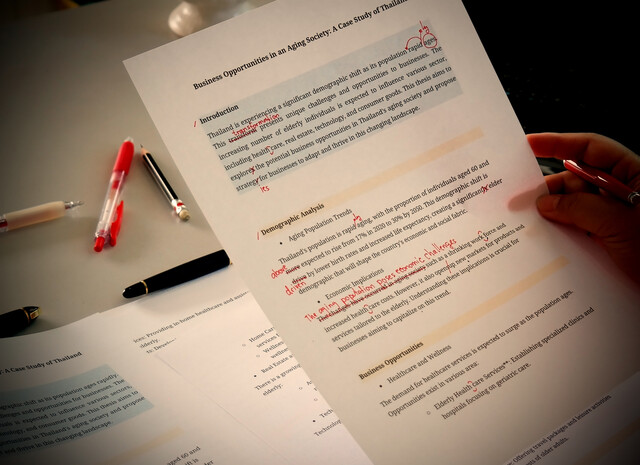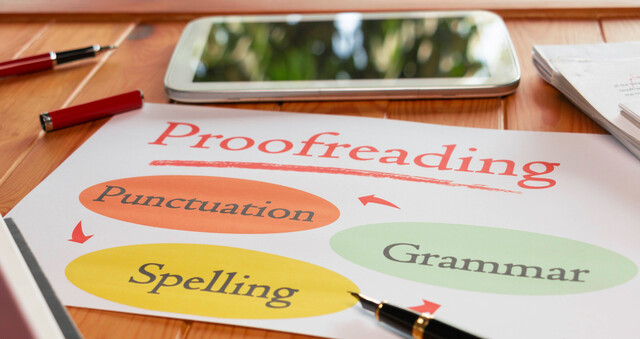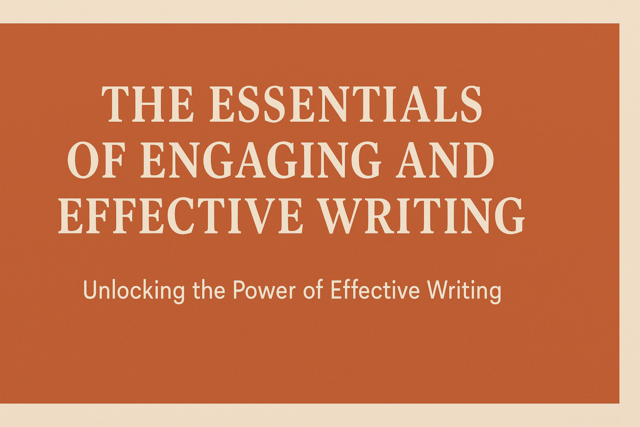ABCs of English Grammar
Learn the Basics of English Grammar Today

15 Hours average completion time
1.5 CEUs
15 Lessons
45 Exams & Assignments
20 Discussions
13 Videos
288 Reference Files
158 Articles
Mobile Friendly
Last Updated December 2025
Mastering English Grammar: Enhance Your Academic and Professional Writing
In our digital age, writing has emerged as a predominant form of communication, be it in academic arenas, professional sectors, or daily interactions. This online course on English grammar is not just about learning the rules; it's about understanding the language's intricacies to communicate effectively, ensuring your messages are both clear and impactful.
Why is Grammar Essential Today?
In a recent survey, it was found that over 70% of employers notice grammatical mistakes in emails, reports, or other professional correspondence, leading them to question the writer's credibility. In the world of academia, the use of precise grammar can mean the difference between an average and an outstanding essay.
In daily life, proper grammar ensures that our intended messages get across without confusion. A simple misplaced comma can change the meaning of a sentence completely. For example, "Let's eat, Grandma" and "Let's eat Grandma" carry vastly different implications!
What This Course Offers
Designed with clarity and comprehensiveness in mind, this course spans 15 lessons that delve deep into both the fundamental and intricate aspects of English grammar. Each lesson is structured to address specific grammar components, from the basics like nouns and pronouns to the complex mechanics of sentence structures.
Every lesson tackles frequent mistakes, illustrates concepts using contemporary examples, and provides strategies to overcome common pitfalls. For instance, the lesson on verb tenses will explain the difference between "I have worked" and "I had worked", and when each should be appropriately used.
Hands-on activities, worksheets, assignments, and surveys accompanying each lesson ensure not only theoretical understanding but also practical application, reinforcing your learning.
Course Breakdown:
-
Lesson 1: Introduction to Grammar - A primer on the importance of grammar in effective communication.
-
Lesson 2: Subject and Predicate - The building blocks of a sentence and how they set the tone for your message.
-
Lesson 3 to 8: Deep dives into various grammatical elements, ensuring a strong foundation.
-
Lesson 9: Review the Mechanics of a Sentence - Understand how different components come together to form clear and concise sentences.
-
Lesson 10 to 14: Advanced lessons on modifiers, capitalization, punctuation, spelling, and diction, vital for polishing your writing.
-
Lesson 15: Summary and Additional Resources - A recap of all you've learned and a guide to further hone your skills.
Who Should Enroll?
This course is a must for high school or college students preparing for English exams, professionals aiming to elevate their written communications, and individuals keen on refining their everyday writing. Whether you're drafting an essential business proposal, penning down a college essay, or simply texting, mastering grammar will ensure your message is received as intended.
A Lifelong Investment
Your writing is a reflection of your thoughts, professionalism, and attention to detail. By mastering the nuances of English grammar, you're not only enhancing your written communication but also investing in a skill that will benefit you for a lifetime. Let this course be your guide to navigating the intricate maze of grammar with confidence and flair. Join us and take a step towards impeccable writing today!
- Professional communication skills
- Mastery of verb tenses
- Enhanced writing clarity
- Effective punctuation use
- Precision in word choice
- Correct use of modifiers
- Improved sentence structure
- Advanced grammar techniques
- Clarity in pronoun usage
-

Spelling 101
-

Basic Writing Skills Level 2
-

English Grammar Level 3
-

Proofreading and Copyediting 101
-

English Grammar Level 2
-

English Composition
-

Writing Basics 101: Spelling, Grammar, Punctuation, Writing Structures
-

Punctuation and Grammar 101
-

Basic Writing Skills Level 1
-

English Grammar Level 1
-

Reading Comprehension 101
-

Writing Help Course Bundle
-

The Essentials of Engaging and Effective Writing
-

Essay Crafting 101: Turning Ideas into Masterpieces